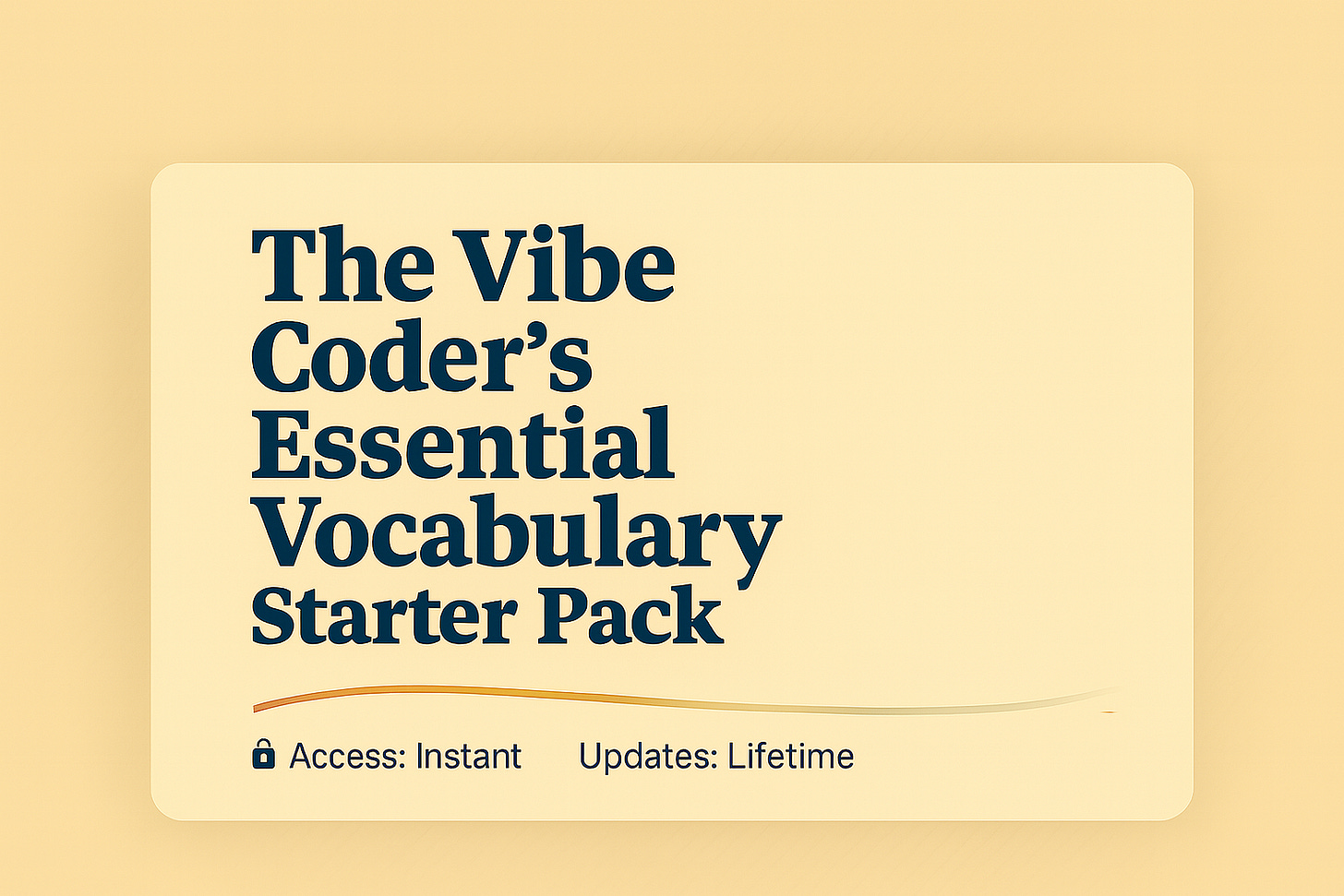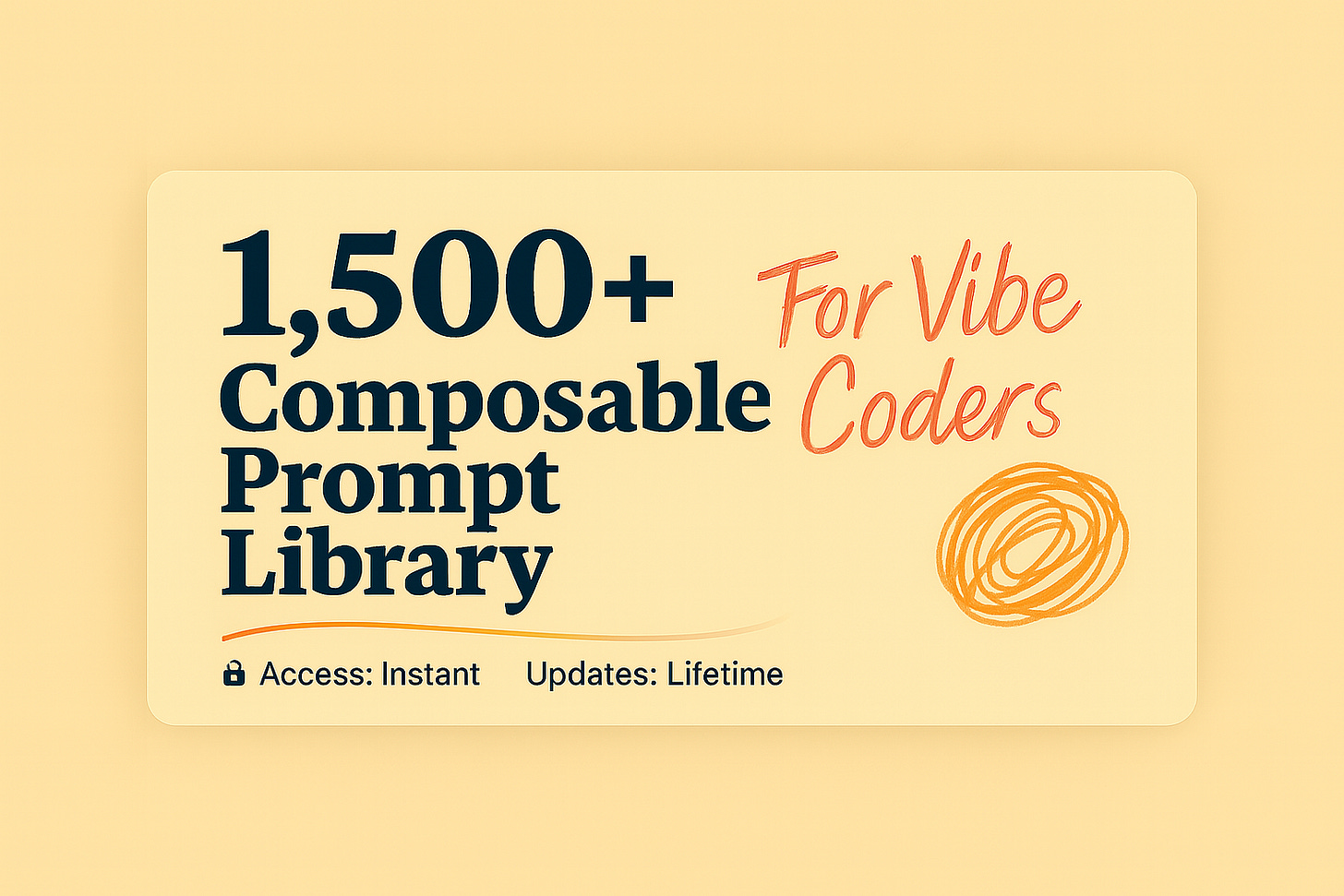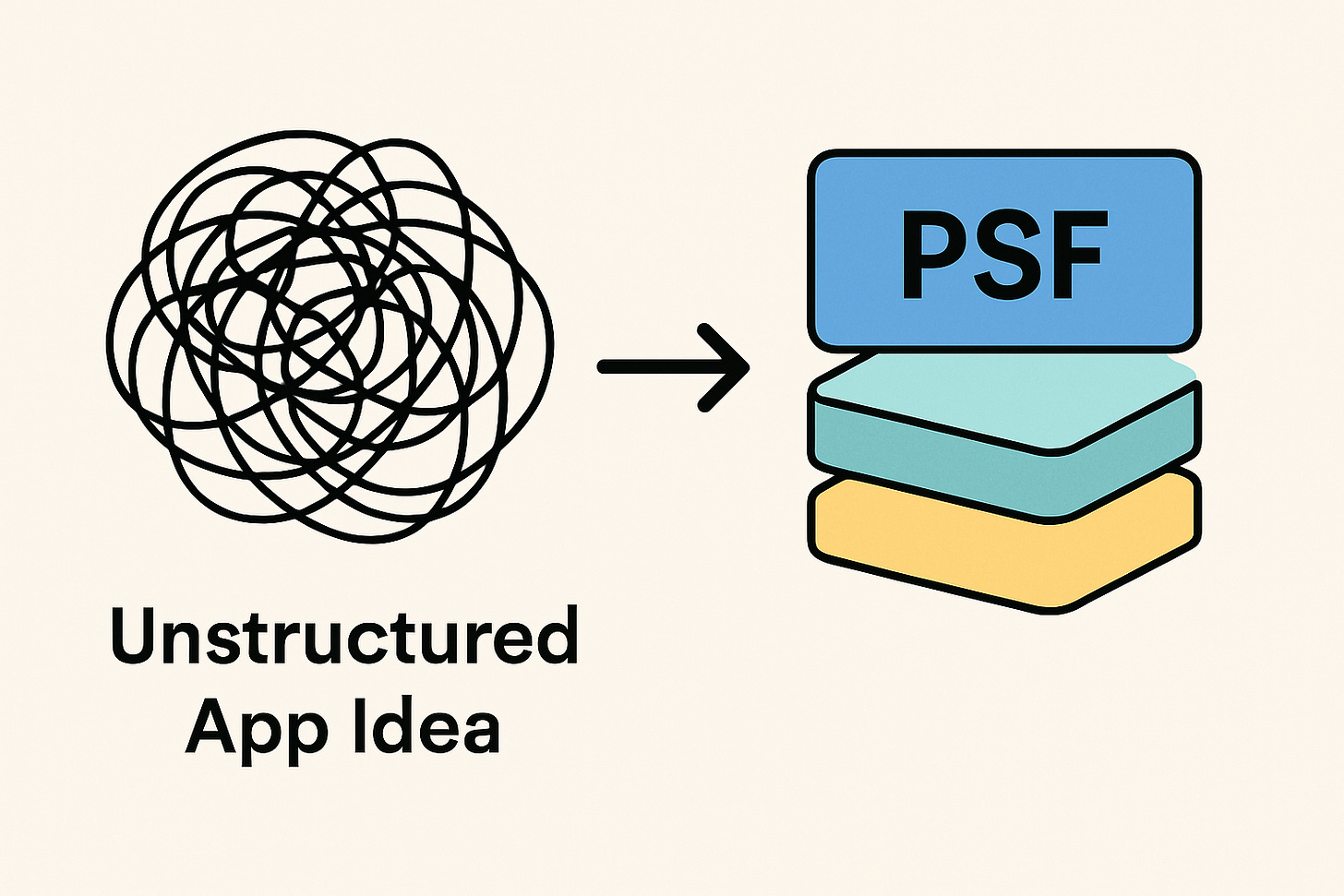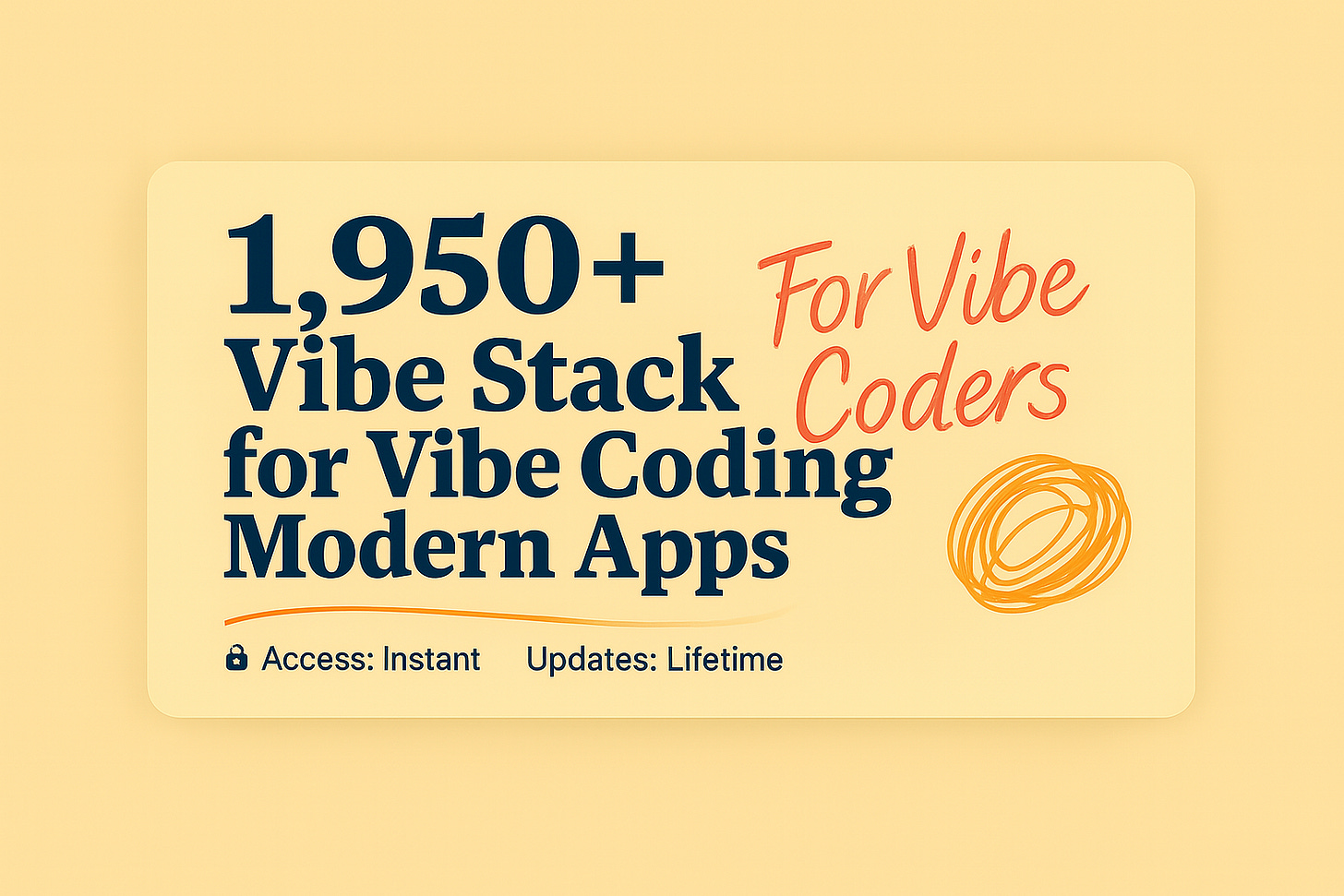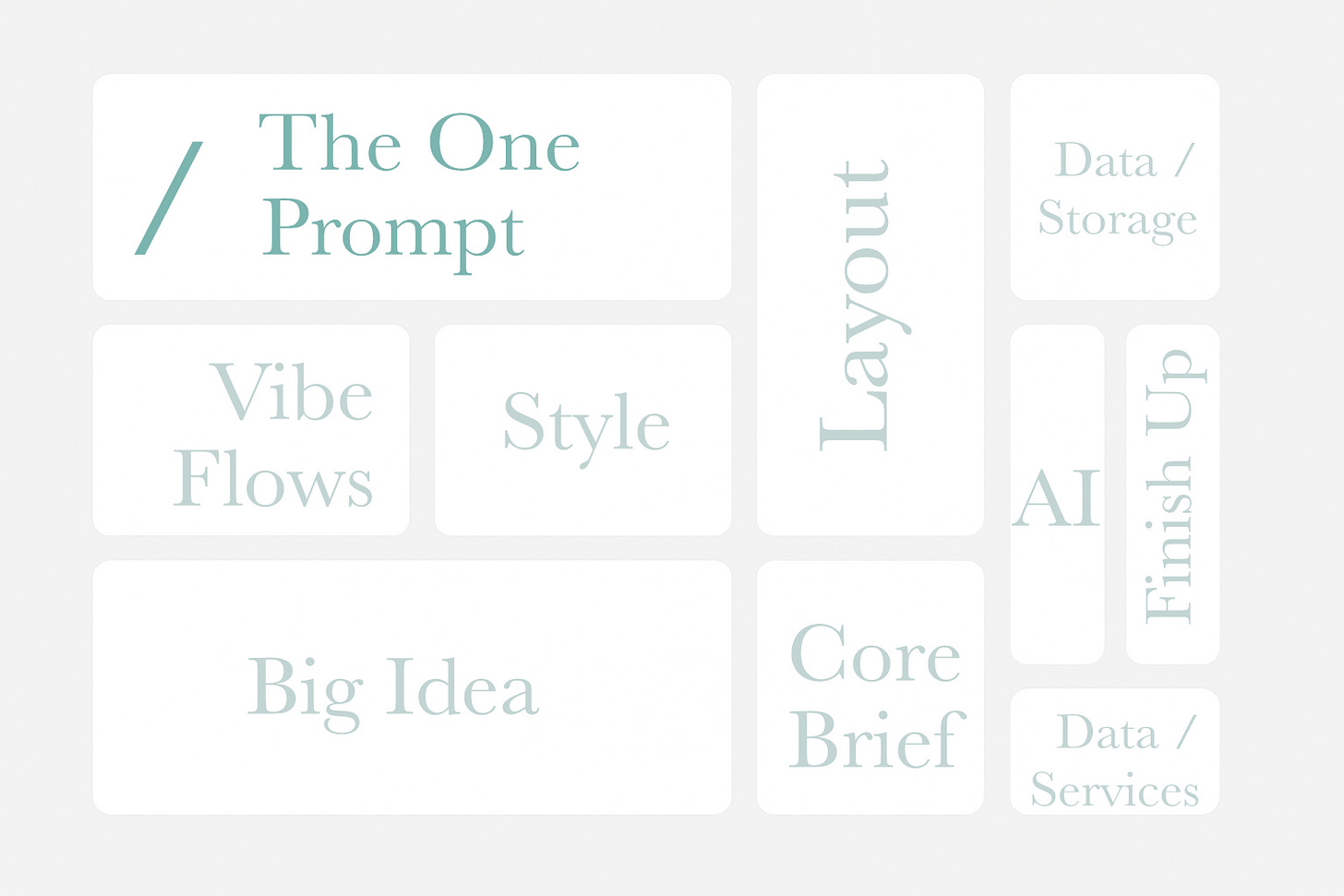Beyond the Vibes: How to Approach Vibe Coding Like a Pro
Why the future belongs to idea people who build with agency, not just prompts
Sam Altman has said it clearly: we are entering the era of the idea person. As AI advances, the ability to build is no longer limited to those with years of coding experience. If you have an idea, you now have the means to bring it into the world.
“For a long time, technical people in the startup industry have made fun of “the idea guys”; people who had an idea and were looking for a team to build it. It now looks to me like they are about to have their day in the sun,” says Sam Altman.
However, having access to AI does not mean you can create something that scales automatically. Anyone can throw words into a prompt box and get back some working code. That is not sufficient. Without a framework, you end up with fragile apps, soaring cloud and API costs, or systems you cannot troubleshoot.
Vibe Coding Is Here to Stay
Y Combinator’s president, Garry Tan, has noted that the consensus among Silicon Valley leaders is that Vibe Coding is here to stay. Not only here to stay, but very likely to become the dominant way we build software. If you are not learning how to build with AI, you risk being left behind.
So the question is no longer whether Vibe Coding will define the future. The argument has been won. The question is how to do it well.
Why Vibes Alone Are Not Enough
AI can generate apps in seconds. It can give you a login form, wire up a database, or spin out a full page of UI. But vibes alone will not get you very far.
If you rely only on raw AI output, you will end up with code that looks fine at first glance but fails under real use. You will find yourself patching edge cases, reworking dependencies, or paying someone else $200 an hour to fix what should have been structured correctly from the start.
Agency Must Stay With You
Andrew Ng has highlighted that AI can suggest code, but you must remain in control. This embodies the essence of Vibe Coding with agency. He prefers the concept of AI-assisted coding over Vibe Coding. AI provides assistance; you take the lead. You set the intent, establish the constraints, and ensure the checks are enforced.
Approaching Vibe Coding like a pro means not just typing or speaking what vibes into the box. It means working from a mental model that ensures clarity, control, and accountability.
From Mental Model to Scaffolds
What separates amateurs from pros in Vibe Coding is not how fast they can get the AI to output code. It is whether they are working from a mental model.
A mental model gives you a map. It keeps you from treating the AI as an oracle and instead frames it as a junior developer inside a structure you control.
The Progressive Scaffolding Framework (PSF) is that model. It guides you from loose ideas to structured builds, forcing you to clarify your intent at each step. With PSF, you do not just drop prompts into a blank box; you guide the AI through layers of understanding until you reach a coherent product.
Why You Need The One Prompt
Even with a framework, it is easy to get fuzzy. The One Prompt template fixes this by forcing you to capture your app idea in nine structured fields:
💡 Big Idea: what the product unlocks
🎯 Core Brief: target, pain, outcome
🗂️ Layout: top, middle, and bottom sections
🔀 Vibe Flows: user action → system behavior → feedback
🎨 Style and Notes: tone, constraints, accessibility
🗄️ Data and Storage: schema and sources
🔌 Data and Services: APIs, auth, payments, integrations
🤖 AI (Optional): where AI features enhance the product
✅ Finish Up: modularity, naming, and a reflection step where the AI summarizes back its understanding before generation
That reflection step is what gives you agency. It ensures alignment and prevents the AI from hallucinating its own interpretation of your intent.
Tools That Put You in Control
By now, you have probably seen the viral stories. Someone posts on X or TikTok about how they built an app with AI “without writing a single line of code.” They show off a somewhat functional demo and talk about hitting thousands in MRR.
For a complete beginner, that looks like magic. It can feel like some kind of alchemy is at work. But the truth is simpler. These people are not magicians. They just know enough of the language of software to speak clearly to the AI. They are familiar with the terms, the flows, and how features fit together.
That is the real unlock. If you want to build with agency, to be in control of what the AI creates for you, you need to learn how to speak dev at a basic level and apply a structure the model can follow.
This is precisely where the Vibe Coding Starter Kit and the Vibe Coding Prompt Kit come into play.
The Vibe Coding Starter Kit is the foundation:
Foundations and Core Concepts: plain-English explainers of Vibe Coding, curated insights, and must-watch videos with cheat sheets.
Essential Vocabulary: a modern glossary that covers every major part of today’s modern software landscape, explained in plain English. You will learn the language of frontends (how screens and components fit together), backends (how data moves through a system), databases (how information is stored and retrieved), identity (how logins and permissions work), payments, APIs, deployment, documentation, security, observability, and more. Each term is simple, practical, and shows you how to describe what you want without falling into jargon.
Composable Prompt Library: over a thousand ready-to-use prompts covering layouts, flows, forms, dashboards, backend actions, authentication, generative AI integrations, and feature blocks. Each is designed to be mixed and matched, so you can scaffold new features without starting from scratch.
The Vibe Coding Prompt Kit is the method:
Progressive Scaffolding Framework (PSF): the layered mental model that turns loose ideas into structured builds.
The Vibe Stack: a system of 1,950 prompts organized into five levels. You begin with building blocks like buttons and forms. You combine them into units like logins, dashboards, or checkouts. You link units into flows such as onboarding or publishing. You arrange flows into full pages, and finally tie the pages into an app blueprint that the AI can generate into real software. Each layer builds on the one before it, just like scaffolding on a construction site.
The One Prompt: the nine-field template that makes intent explicit, constraints visible, and outcomes testable before the AI writes a single line of code.
Beyond the Vibes
Vibe Coding is no longer a question. As Garry Tan put it, the consensus in Silicon Valley is that this is the dominant way we will build. The only question left is how you will approach it.
The future belongs to those who can pair ideas with structure. It belongs to those who retain agency in their own hands, rather than blindly following whatever the AI suggests.
This is how you move beyond the vibes and build like a pro. No one will make fun of you - “the idea guys” - any longer.
P.S. Paid subscribers get free access to both the Vibe Coding Starter Kit and the Vibe Coding Prompt Kit, including lifetime updates. It’s my way of making sure you not only read about Vibe Coding with agency, but also have the tools to practice it.
What did you think of today’s newsletter?
❤️ Loved it — share it with a friend or drop a 🙌 below.
🫤 Meh — you can unsubscribe here or manage your subscription.
🥳 I’m new here — welcome! Free subscribers can access starter resources to get started building with AI. Paid subscribers unlock the full Vibe Coding Starter Kit + Prompt Kit with lifetime access. Join the Vibe Coding movement: build with agency, innovate boldly, and scale without code.



